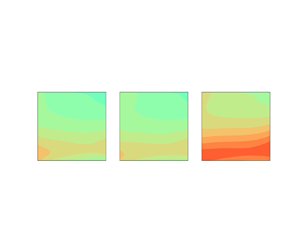Published online by Cambridge University Press: 09 January 2024

An efficient numerical method for calculation of the sea surface skewness and kurtosis for arbitrary wave spectra, taking up to third-order nonlinear effects into account, is developed. The skewness and kurtosis are calculated for a large number of sea states, covering a wide range of sea-state parameters in terms of wave steepness, water depth, directional spreading and frequency bandwidth. The results are used to propose new accurate expressions for skewness and kurtosis, valid over a wide range of sea states. Existing expressions for skewness and kurtosis reported in the literature are reviewed, and their accuracy is evaluated. Comparison to model-test results and phase-resolved numerical simulation are presented. It is suggested that the new improved parametrizations for skewness and kurtosis, which include dependence on wave steepness, water depth, spectral bandwidth and directional spreading, represent a convenient way to include these covariates into higher-order distributions for crest heights, wave heights and surface elevation.